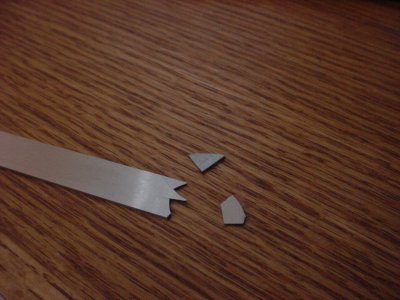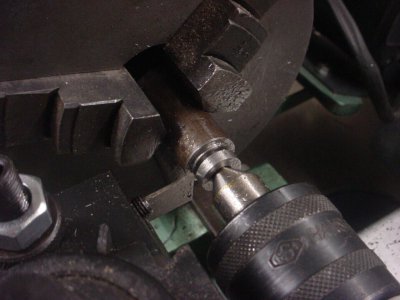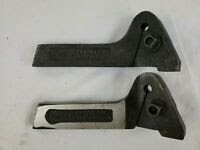- Joined
- Oct 17, 2018
- Messages
- 922
I broke my brand new parting tool blade. I bought two; a thin kerf one (0.040") and the normal kerf one (0.062"), both 1/2" high by about 3" long, US made. I was using the thin one to part off a small piece of steel rod, type unknown (probably CRS), but it wasn't anything fancy, since I got it from the school shop where I work.
Here's a picture of the broken blade:

I think I was feeding it too fast, but how would I know? I switched over to the thicker kerf and that worked, but I fed it VERY slowly. The machine (Atlas Craftsman 101) chattered/groaned/vibrated a bit whenever I engaged the blade, only stopping when I got to a smaller diameter. It made noise whenever I engaged it and at any feed speed. I was on the 2nd lowest spindle speed. I used cutting oil. I also used the tail stock and that seemed to help a bit.I also cut the slot a little wider than the blade, backing out the bade, moving over 0.005", then making another cut, etc.
Here's a picture of the setup that worked. When I broke the blade, there was no tail stock and the blade was only extended out as much as I needed.

Anyone have any insights as to what I did wrong? Is there a technique to parting?
Thanks!
Here's a picture of the broken blade:

I think I was feeding it too fast, but how would I know? I switched over to the thicker kerf and that worked, but I fed it VERY slowly. The machine (Atlas Craftsman 101) chattered/groaned/vibrated a bit whenever I engaged the blade, only stopping when I got to a smaller diameter. It made noise whenever I engaged it and at any feed speed. I was on the 2nd lowest spindle speed. I used cutting oil. I also used the tail stock and that seemed to help a bit.I also cut the slot a little wider than the blade, backing out the bade, moving over 0.005", then making another cut, etc.
Here's a picture of the setup that worked. When I broke the blade, there was no tail stock and the blade was only extended out as much as I needed.

Anyone have any insights as to what I did wrong? Is there a technique to parting?
Thanks!


